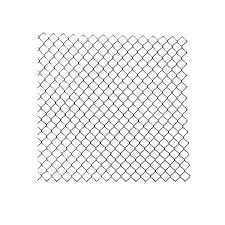The Importance of Anti-Bird Mesh in Modern Urban Settings
In an era where urbanization is rapidly transforming our landscapes, the balance between human activities and wildlife conservation has become increasingly crucial. One of the innovative solutions that address the challenges posed by birds in urban environments is the use of anti-bird mesh. This article explores the significance of anti-bird mesh, its applications, advantages, and its role in protecting both buildings and bird populations.
Understanding Anti-Bird Mesh
Anti-bird mesh is a type of barrier made from high-strength polypropylene or stainless steel wire, specifically designed to deter birds from entering unwanted areas. It comes in various sizes and configurations, allowing for adaptability in different environments. Its primary purpose is to prevent birds from nesting on buildings, structures, and certain agricultural fields, ultimately safeguarding both property and avian life.
Applications in Urban Settings
The use of anti-bird mesh is widespread in urban settings where buildings interact closely with bird populations. High-rise buildings, stadiums, and warehouses are some of the common locations where this mesh is installed. It helps prevent birds from roosting in eaves, ledges, and other architectural features, which can lead to unsightly droppings, noise disturbances, and even structural damage.
Additionally, in agricultural settings, especially in vineyards and orchards, anti-bird mesh provides an effective means of protecting crops from being pecked at by birds. By creating a barrier, farmers can ensure a higher yield and quality of produce, instrumental in sustaining agricultural economies.
anti bird mesh

Advantages of Anti-Bird Mesh
1. Protection of Property One of the primary advantages of anti-bird mesh is its role in protecting buildings and structures. Bird droppings are acidic and can cause significant damage to roofs, walls, and windows. By deterring birds, mesh contributes to the longevity of property and minimizes maintenance costs.
2. Health and Hygiene Birds can carry various diseases that pose health risks to humans. Their droppings can contaminate the environment and food sources. Anti-bird mesh helps reduce these health hazards by keeping birds at bay and maintaining a clean environment.
3. Preservation of Biodiversity While it may seem counterintuitive, anti-bird mesh plays a vital role in preserving local biodiversity. By providing designated areas where birds can thrive without conflicting with human activities, we can promote a healthier ecosystem. This approach fosters a coexistence model where both wildlife and urban development can prosper.
4. Cost-effective Solution Compared to more invasive methods of pest control, such as traps or chemical deterrents, anti-bird mesh proves to be a cost-effective, long-term solution. Once installed, it requires little maintenance and can last for many years, making it a wise investment for property owners.
Conclusion
As urban areas continue to expand, the need for effective solutions that address the intricate relationship between human beings and wildlife is paramount. Anti-bird mesh represents a practical and innovative approach to managing bird populations while safeguarding buildings and promoting public health. By embracing such solutions, we move towards a more sustainable future where both man-made and natural environments can thrive in harmony. In an age where environmental consciousness is increasingly relevant, utilizing anti-bird mesh can serve as a small but significant step towards creating urban spaces that are mindful of nature and its inhabitants. Ultimately, it’s about finding ways to coexist peacefully with the rich tapestry of life around us, ensuring that urban environments do not come at the expense of wildlife.
















